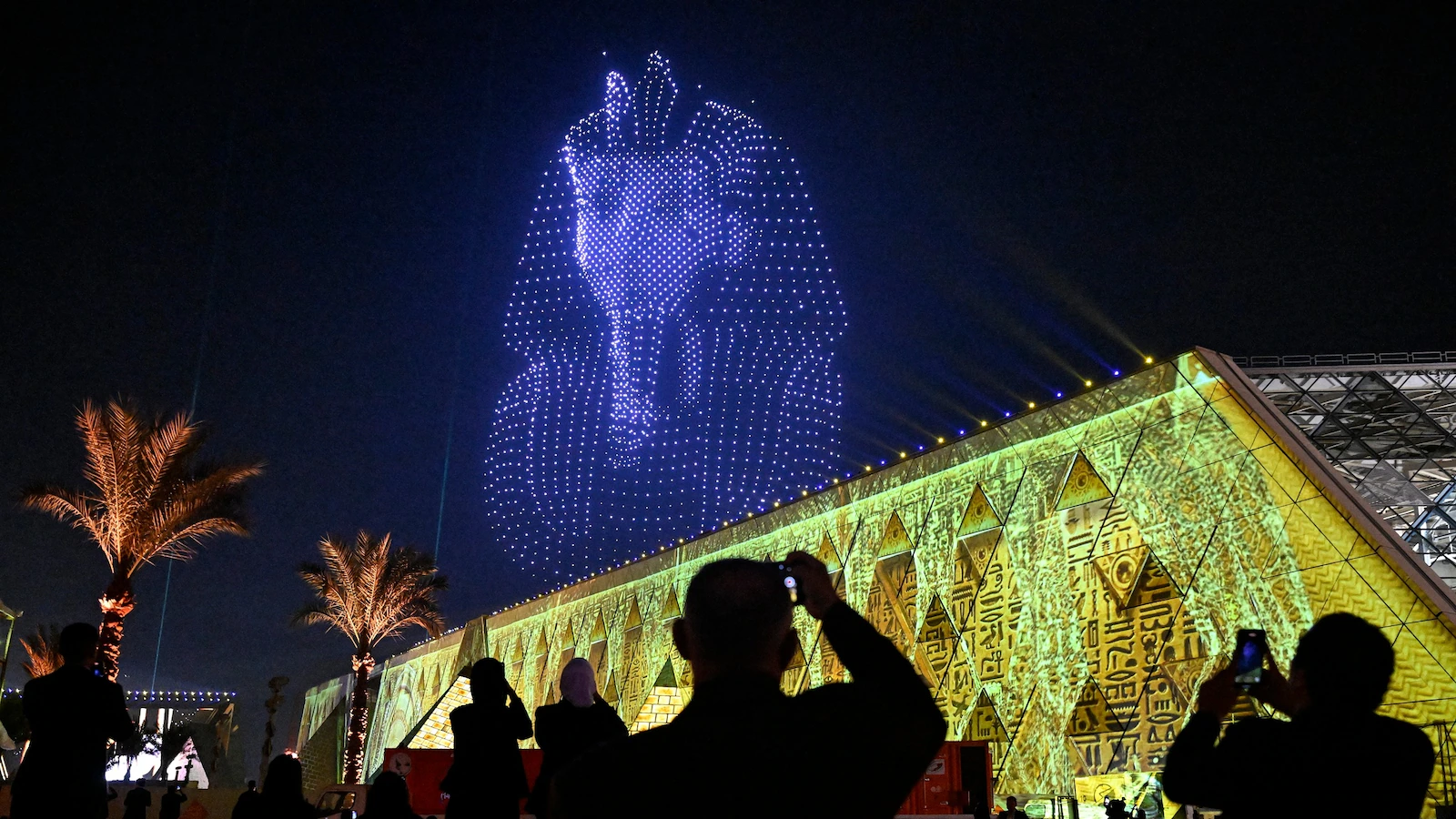Copyright ABC News

CAIRO -- Egypt on Saturday held a glittering ceremony attended by European and Arab royals and presidents to mark the long-awaited full opening of the Grand Egyptian Museum (GEM) -- one of the country's most ambitious cultural projects -- after several years of delay. Over two decades in the making, the $1 billion museum -- set close to the famed Pyramids of Giza, just outside the capital Cairo -- is touted by officials as the world's largest museum dedicated to a single civilization. Its inauguration has faced repeated setbacks, most recently the coronavirus pandemic and regional conflicts. A partial opening took place last year. "We are writing a new chapter of the history of the present and the future in the story of this ancient nation," Egyptian President Abdel Fattah El-Sisi said at the opening event. The ceremony featured a dazzling light and music show outside the museum, with massive screens displaying Egypt's ancient monuments. Dancers in ornate pharaonic costumes -- crowned with golden headpieces and holding scepters -- performed to a live international orchestra, as fireworks and drones depicting ancient gods lit up the sky above. The audience included dignitaries from around 80 countries, among them German President Frank-Walter Steinmeier, Dutch Prime Minister Dick Schoof, Spain's King Felipe VI and Greek Prime Minister Kyriakos Mitsotakis. Also in attendance were Palestinian President Mahmoud Abbas, Saudi Arabia's Minister of Culture Badr bin Abdullah and the crown princes of Oman and Bahrain. The Egyptian government declared a public holiday, issued commemorative gold and silver coins and printed special postage stamps to mark the occasion. Spanning nearly 24,000 square meters of permanent exhibition space -- roughly the size of four football fields -- the Grand Egyptian Museum houses around 57,000 artifacts. The facility also includes a children's museum and what officials describe as the Middle East's largest conservation center. Full Tutankhamun treasures unveiled At the heart of the full opening is the long-anticipated unveiling of the complete collection of King Tutankhamun's golden treasures. More than 5,000 artifacts belonging to the "Boy King" -- including his iconic golden funerary mask -- will be displayed together in their entirety for the first time since the tomb's discovery in 1922. While many pieces were previously exhibited at the cramped century-old Egyptian Museum in downtown Cairo, some items remained locked away in storage. Following the ceremony, Sisi was shown on television giving guests a tour of the expansive, light-filled King Tutankhamun halls, revealed on TV for the first time. "What sets this apart is not just the full collection, but how it is presented -- as a narrative of the king's life and reign, not as standalone objects, and without visual clutter," museum director Ahmed Ghoneim told ABC News. The museum uses modern display techniques -- including augmented and mixed reality, digital simulations and immersive storytelling, with AI to be integrated soon -- "to reintroduce ancient Egypt in a vibrant and engaging way," he said. "It is a statement of Egypt's soft power and its ability to leverage history and culture to enhance its global standing," Ghoneim added. Among the other highlights is the exhibition of Pharaoh Khufu's solar boats, discovered buried near the Great Pyramid in 1954. The first, a 42-meter-long, 4,600-year-old wooden vessel, is now on display. A second twin boat will be restored and reconstructed from nearly 1,700 wooden pieces in full view of visitors over the next three years. Visitors entering the museum are greeted by the colossal 3,200-year-old, 11-meter-tall statue of King Ramses II, which stood for decades in central Cairo's Ramses Square before being relocated to its new home near the museum in 2006. From the central atrium, the Grand Staircase -- a six-story ascent lined with around 60 monumental artifacts including statues, sarcophagi, columns and stelae -- culminates in a view of Giza's three famous pyramids. The 12 main galleries trace Egypt's history from prehistory through the Greco-Roman era, exploring themes of society, kingship and belief.



